1700-year-old necropolis discovered in Corsica
Before the construction of the Pagliaghju and Domaine Zanardi real estate projects by the Demeures Corses company in the commune of Ile Rousse (Corsica), an archaeological excavation was carried out by Inrap following a request from the State (DRAC of Corsica). The excavation uncovered a necropolis dating from the 3rd - 6th centuries AD.
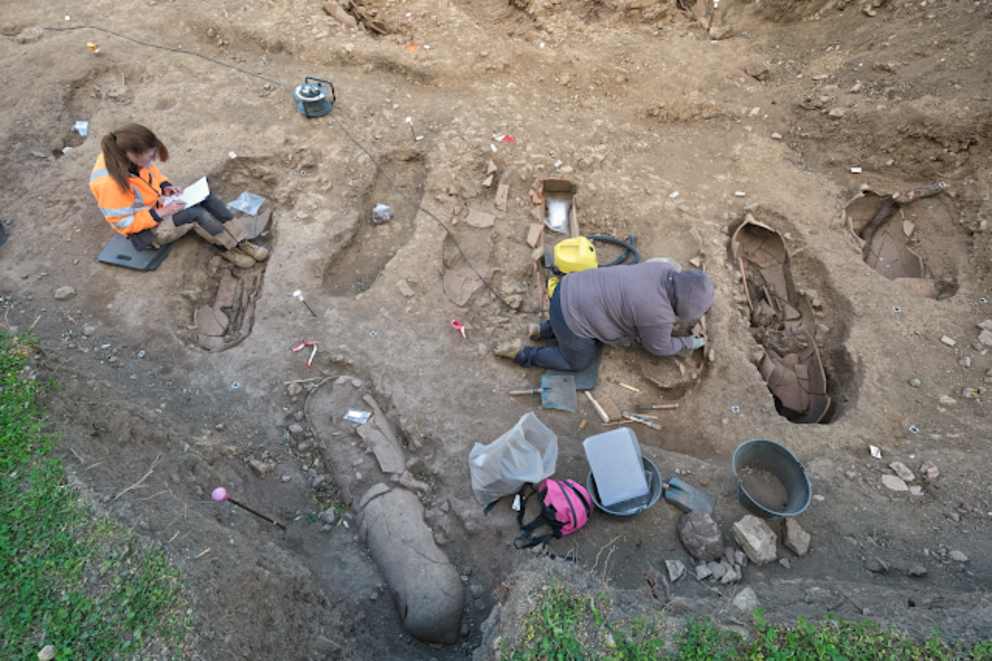
Inrap archaeologists excavate the burials in amphora uncovered
in Ile-Rousse [Credit: Pascal Druelle, Inrap]
The occupation of the site during the Late Imperial period is thus now confirmed with this first excavation carried out in the heart of the city, founded in the middle of the 18th century by Pasquale Paoli.
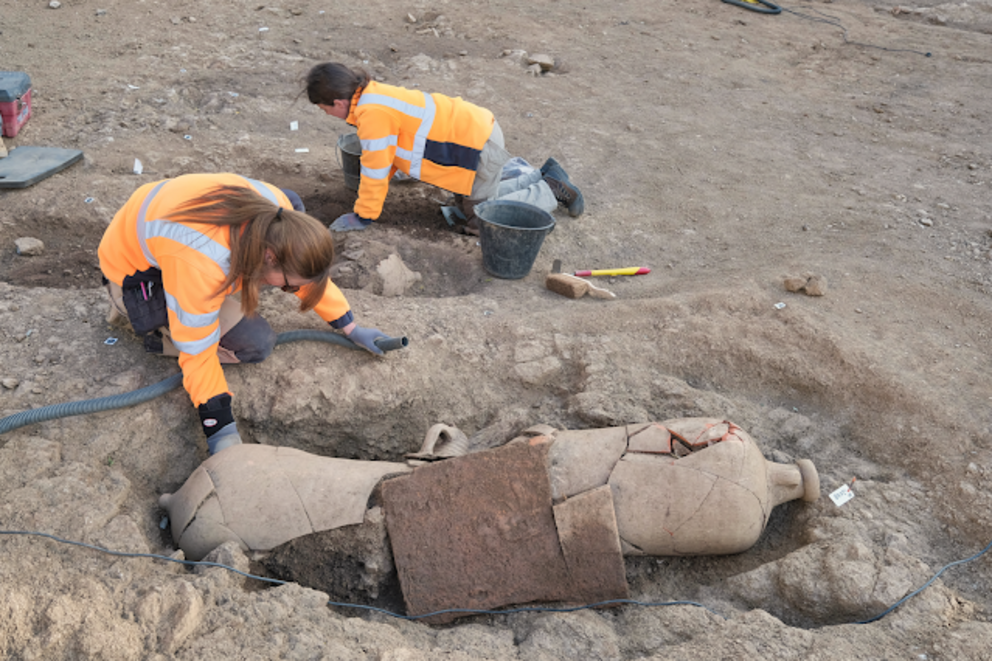
Inrap archaeologists excavate the burials in amphora uncovered
in Ile-Rousse [Credit: Pascal Druelle, Inrap]
Located on the western coast, in Balagne (northern Corsica), the commune of Ile-Rousse is dominated on the east by Cape Curboriu. Historical texts link the territory to the pieve of Aregno (religious district) and only mention a modest village of fishermen and farmers until the 18th century. The archaeological evidence of previous occupations so far discovered was rare and fragmentary.
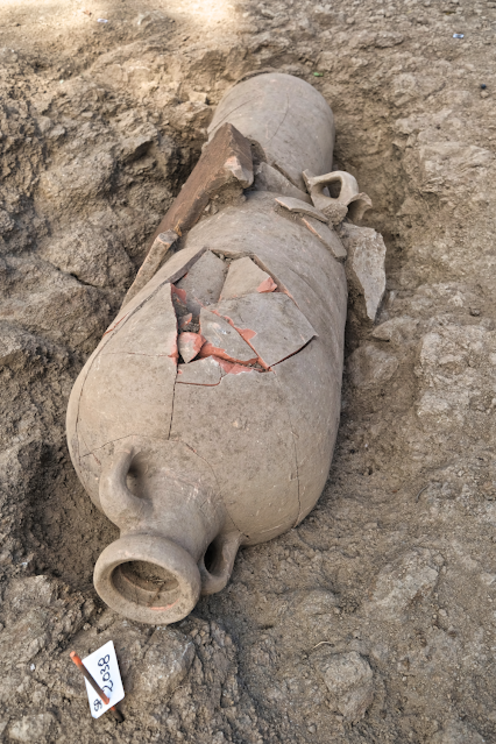
Nested amphorae used as coffin [Credit: Pascal Druelle, Inrap]
In the spring of 2019, an archaeological assessment revealed a dozen ancient burials to Inrap archaeologists. Although this area was largely redeveloped in the 19th century, notably by the extension of the rampart, which is still standing today, the necropolis seems to be confined between the rue Louis Philippe to the north and the rocky reliefs that are still perceptible to the south and east of the area affected by the development, behind the church of the Immaculate Conception.
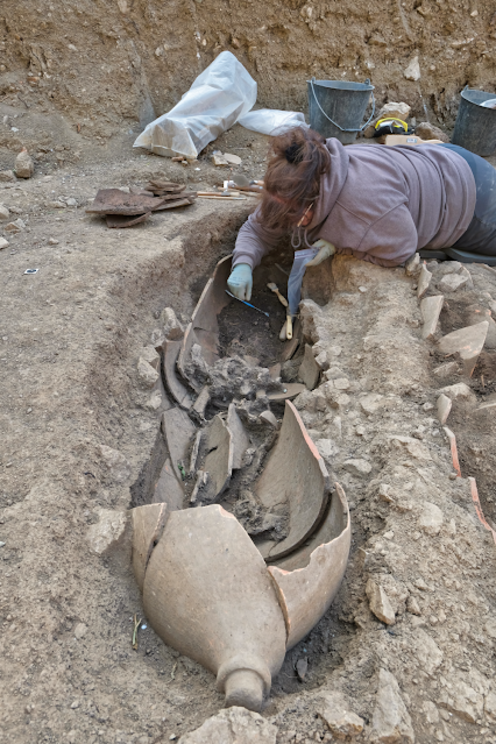
Remains revealed inside amphora burial [Credit: Pascal Druelle, Inrap]
From late February onwards, research carried out on two sensitive sectors of about 600m² reveals a great variation in terms of burial type. The sepulchral pits are dug directly into the bedrock. Some burials are equipped with a layout reusing terracotta materials such as Roman tiles with a rim called tegulae, and joint covers called imbrices, as well as amphorae which are in the majority on the site. The latter are in fact used as receptacles for the deceased.
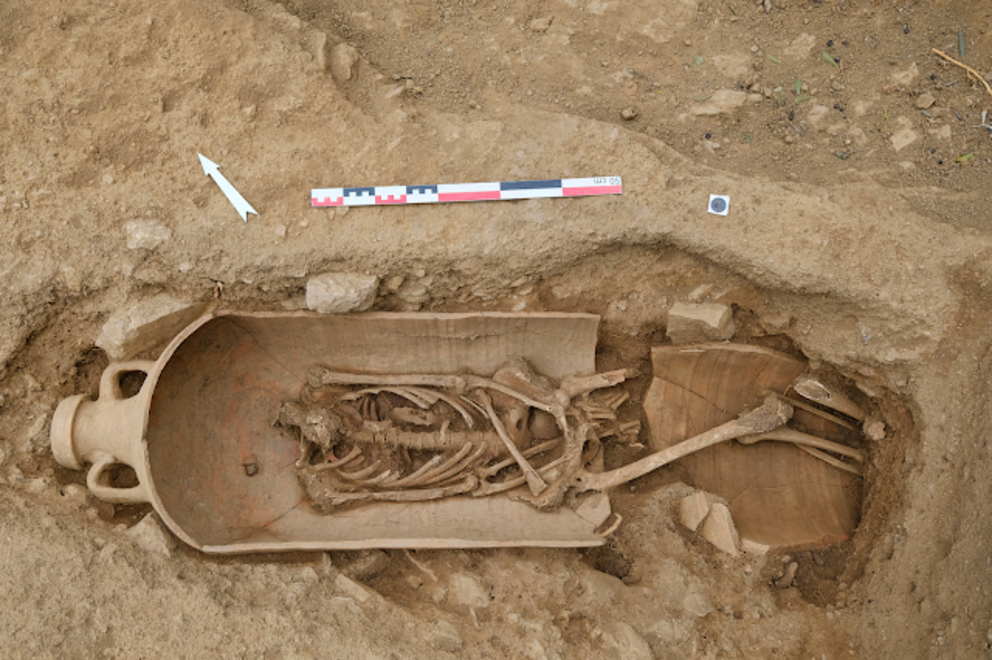
Body buried inside large amphora [Credit: Pascal Druelle, Inrap]
Burial in these large cylindrical containers is generally reserved for children, although some adults are buried in them as well. In this case, two amphorae are nested inside each other. Most often it is the fragments of the belly that serve as a lid. These amphorae are mostly African productions, which were the predominant imports into Corsica between the fourth and seventh centuries AD, especially for holding wine, olive oil and salted fish from Carthage (Tunisia).
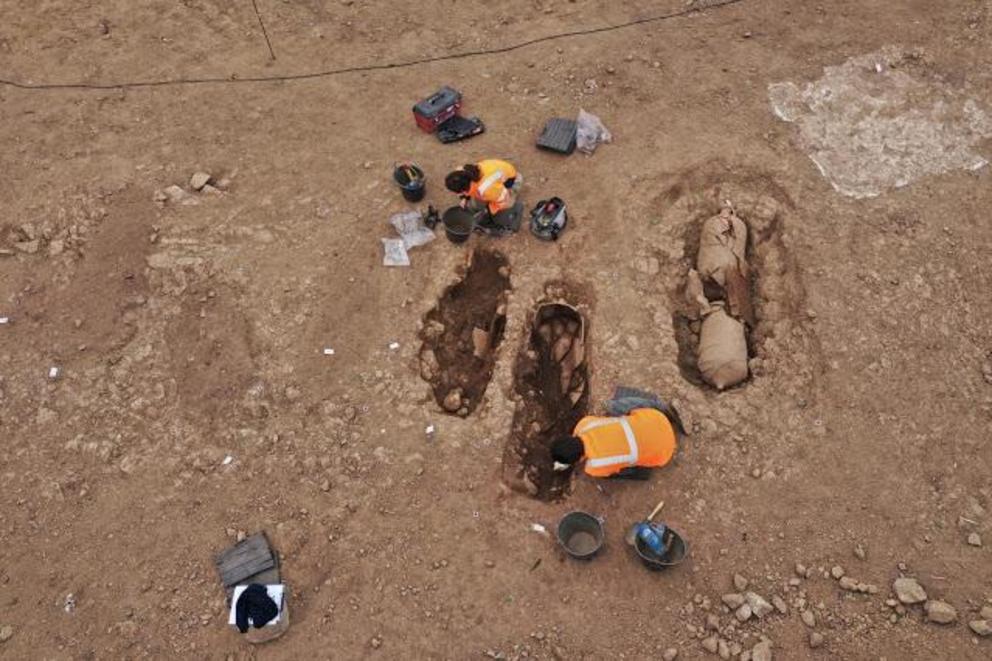
Late Imperial necropolis burials excavated [Credit: Pascal Druelle, Inrap]
No deposits of offerings accompanying the deceased have yet been found in the excavated tombs. The orientation of the graves is generally east-west with the heads of the deceased facing west. The individuals are in an average state of preservation and require particular care when removing the bones. Most of the burials have undergone surface deterioration linked to the successive development of the site, from the foundation of the city to the extension of the ramparts, the creation of the Place Paoli in 1834 and the construction of the Church of the Immaculate Conception, inaugurated in 1893, which gave rise to major earthworks to fill in the rocky slope. The position of the remains and the age at death have been established. The anthropological laboratory study should provide new information on this population.
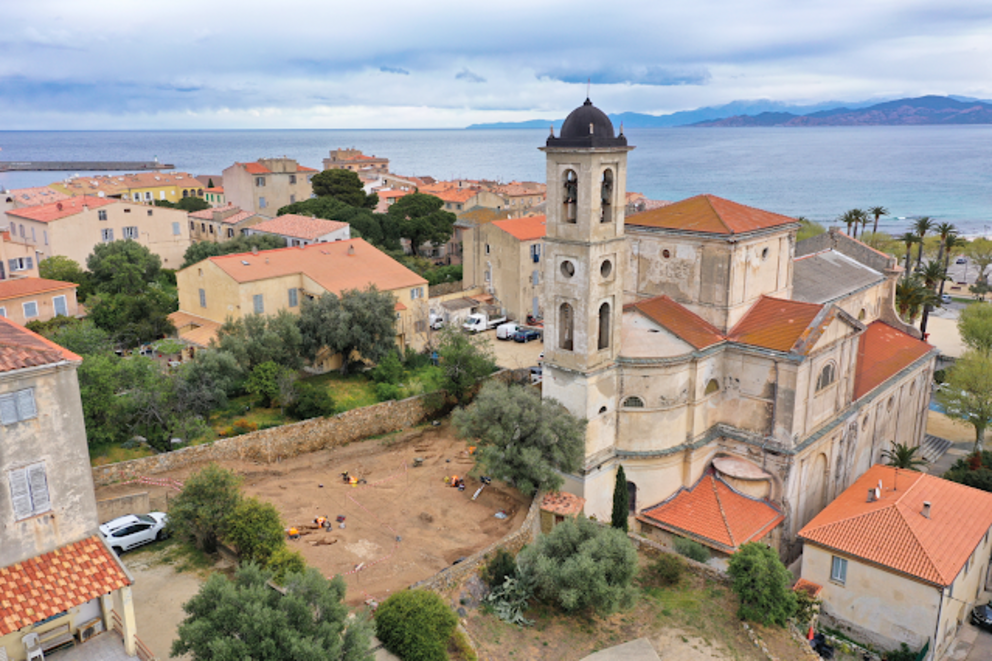
Necropolis surrounded by 19th century development [Credit: Pascal Druelle, Inrap]
This unexpected discovery of some forty burials renews the ancient past of Ile Rousse, and more widely of the western coast of Corsica. The known examples on the island of such burials are often associated with cult buildings, such as the sites of Mariana or Sant'Amanza. However, no building has yet been uncovered, but its existence cannot be ruled out in the immediate vicinity of the burial zone covered by the archaeological excavation.
